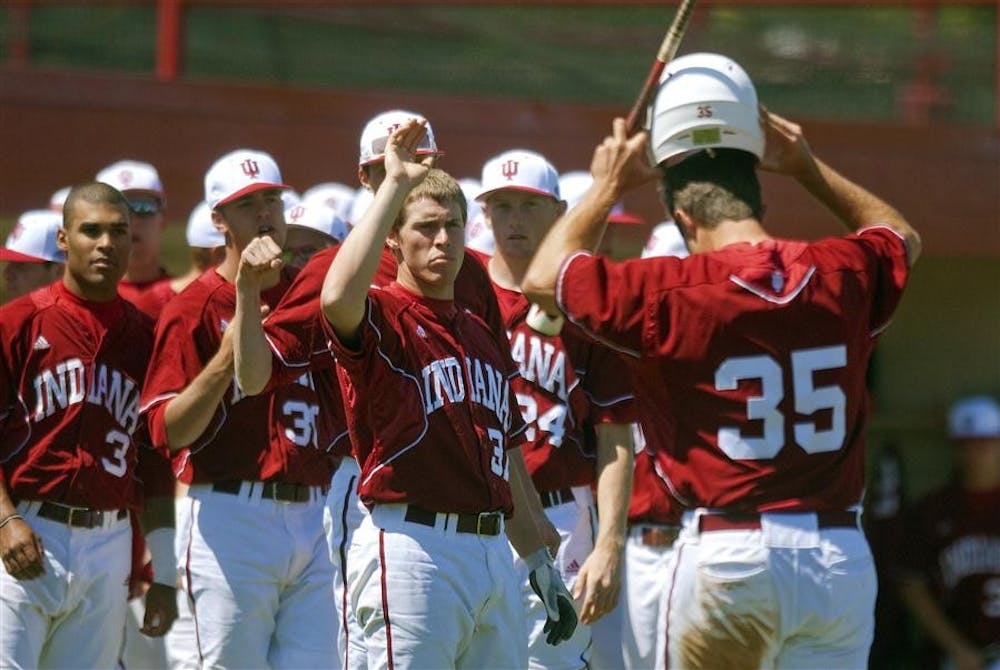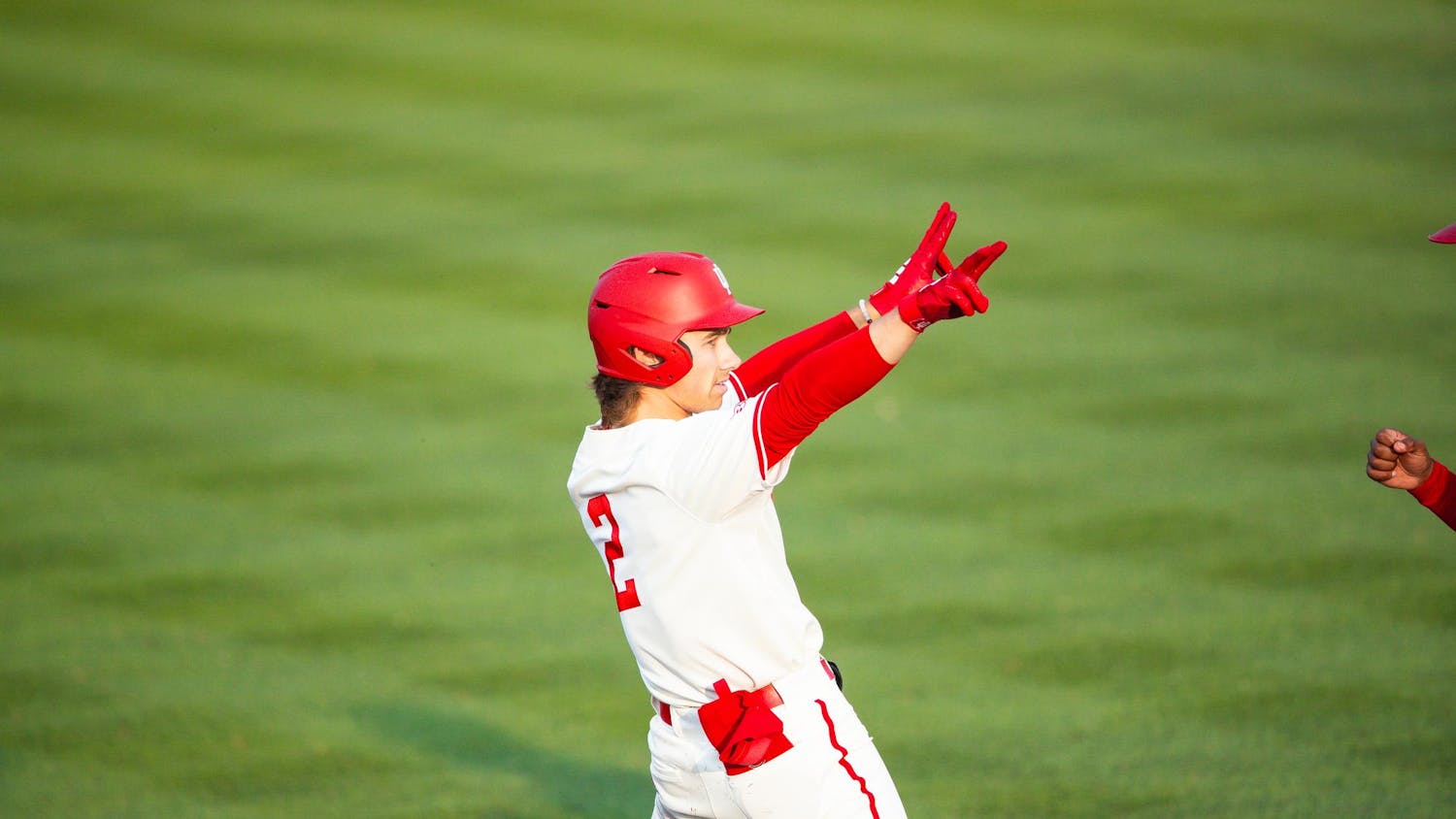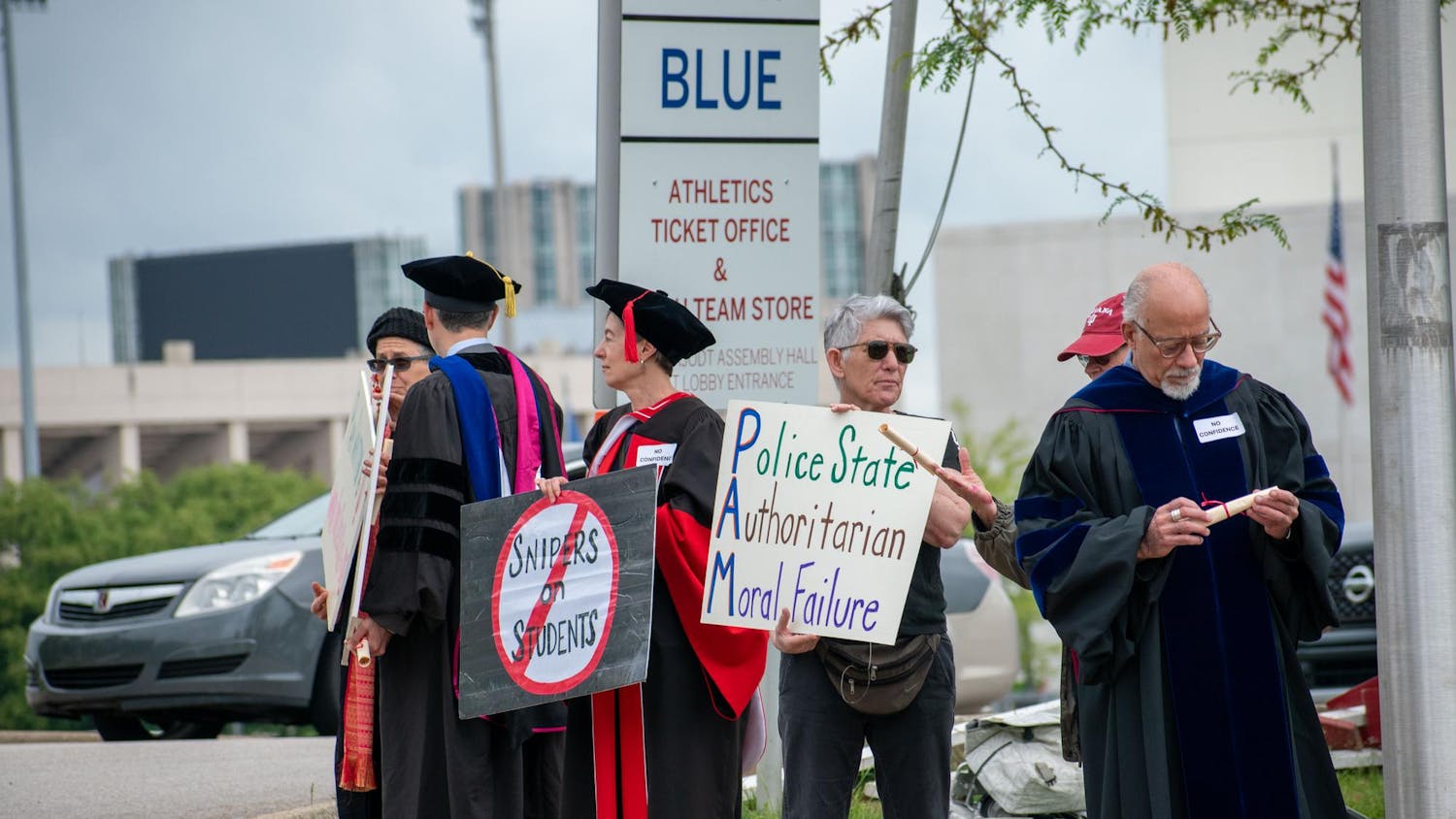The throw to home plate for the right fielder? It’s uphill.
Playing night games? Well, they’d be awful dark.
A warning track to help outfielders avoid a dangerous collision with the outfield fence? It’s not there.
Each of these is a hallmark of the 59-year-old Sembower Field that makes IU baseball coach Tracy Smith cringe a little when people ask him: What’s up with the new stadium?
“It’s all of the time,” Smith said. “There isn’t a day that goes by that somebody doesn’t ask me about the stadium.”
Those questions weren’t supposed to be asked midway through the 2010 season.
Way back in September 2006, the board of trustees approved three major building projects for an athletics department riding a bit of a high at the time.
The late Terry Hoeppner had turned an oft-struggling football program in the right direction and had energized its fan base. Then-men’s basketball coach Kelvin Sampson sat just three weeks away from his first official practice at IU.
And on the baseball side, Smith was working his first offseason at IU a year after leaving a Miami University (Ohio) program that he had turned into an annual NCAA tournament contender.
Hoeppner’s football stadium had the now-completed North End Zone Facility addition to Memorial Stadium approved. A new basketball practice facility for both Sampson’s men’s squad and Felisha Legette-Jack’s women’s squad got the go-ahead.
And listed third on the $55-million plan, funded with $10 million from gifts and $45 million from athletics department revenue bonds, was a new baseball and softball complex, originally planned to be built just north of Memorial Stadium near the intersection of North Dunn Street and the State Road 45/46 bypass.
The expected completion date of the project, per the Facility Committee’s report was November 2008.
Today, that building site is the same as it was in September 2006, serving its sole purpose as a gravel parking lot for football crowds. A faded sign bearing the initial drawings of the new baseball-softball facility still stands just outside the first-base side of the current Sembower Field.
Smith wishes he had a better answer for the routine stadium questions.
“I see where they’re coming from,” he said. “We had a public groundbreaking three years ago — I’ve got my hard hat to prove it — and it’s all out there and people are curious.”
IU Athletics held a ceremonial groundbreaking for every approved new facility on June 19, 2007 — a day also filled with sadness as football coach Hoeppner passed away after a battle with brain cancer.
“The breaking ground was a little premature and certainly ceremonial,” said Fred Glass, IU vice president and athletics director.
Glass, hired last summer to replace former Athletics Director Rick Greenspan, acknowledges that, while he’s proud to see the basketball and football projects complete, the baseball-softball complex delay has been disingenuous to those programs.
“We are very mindful of timetables on this,” Glass said, cautiously avoiding putting any more expected completion dates in the public domain. “I’m also mindful of the fact that the student-athletes on the team now thought they’d be playing in a new stadium now when they got here.”
That’s a fact that Glass admits has had an impact on both his program and more.
“I think the credibility of the athletic department is at stake, and frankly, I think the credibility of the board of trustees is at stake,” Glass said. “They approved this a long time ago and we’ve recruited two excellent coaches and several excellent student-athletes with the idea that this project was on the horizon.”
Smith said it has also had impact on recruiting, both in the presentation he and his staff make to potential recruits and in the facilities that other schools have built since the idea was first passed nearly four years ago.
“When we were talking about it five years ago, all the other teams, schools were listening,” Smith said, noting he no longer makes the new stadium a key point of his recruiting pitch. “Well, now, those schools that were listening now have facilities, and we’re still talking about it. That being said, I’ve got a lot of faith in Mr. Glass and that he’s going to execute that plan.”
The newest development in terms of replacing Sembower — which Smith refers to as a “glorified high school field” — involves either a renovation or replacement of the current structure on the same site. Glass said he’s expecting a renovation estimate from an Indianapolis architecture firm “almost any day”.
Smith, for one, is an unabashed fan of keeping the current stadium location, regardless of whether the project is a complete demolition and rebuild or a renovation of Sembower.
“I think it should stay on the current site,” Smith said. “I think if you keep it on the current site, it captures the student population which is very, very important for us when school is in session.”
Smith has experience with such a job, as a new stadium was built on the site of the old one during his tenure as coach at Miami.
“That facility was ranked one of the top-10 baseball atmospheres — not stadiums — because of where it was,” Smith said of the new Miami stadium on the school’s campus. “If we do the same thing, but a little bit bigger and better here, we will have one of the most prime pieces of real estate in college baseball.”
The fifth-year coach does have one major request from the stadium — aside, of course, from getting it done. Smith is a big fan of a completely artificial surface as opposed to the traditional natural grass.
“I think it makes a lot of sense, geographically, where we are,” Smith said. “From a practice standpoint, we can get on that thing in February when normally we’re not.”
An artificial surface also would afford more community use and a sizeable impact on the Bloomington economy due to high-level amateur tournaments eyeing Bloomington as an ideal host city.
“It would be huge, there’s no doubt about that,” said Eric Marvin, director of the Hoosier Sports Corporation. “If we can get a few more of those baseball groups in here, we’re talking about millions of dollars being put into the Bloomington community.”
Lights would also contribute to making the field more marketable and would be better for the student-athletes, Smith said.
At the moment, he said, his players often have trouble with a university formula that sets a maximum on missed classes due to games that have to start in the middle of the day.
“I think with lights, not only would it simply allow fans to get there, but it would lessen the burden of our kids academically and free them up a little bit so we’re not always taking these kids out of class,” he said.
In the meantime, Smith — while wishing he would just record his answer to the persistent stadium question for future use — said he knows he has a more important job than dabbling in the stadium issue.
“I trust what they’re doing, that Scott Dolson and the Varsity Club are out cultivating and making relationships with people to get this going while we can concentrate on doing what we really need to do, which is win baseball games,” Smith said. “Everything I’ve been told is positive. They’ve shown me nothing to the contrary.”
There are plenty of reasons and excuses for the delay, from higher-than-expected costs to simultaneous construction projects and the change in the athletics director’s office.
Still, Glass knows it’s a project that needs to get done.
“We need to have a realistic target in terms of the funding that we need,” Glass said. “Once we reach the tipping point where we feel like we have enough money, we can break ground for real.
“I think this is a way to add another pillar, if you will, to our athletic program. There’s a lot of people out there that are excited about helping us do that.”
Nearly 4 years after its approval, new baseball stadium remains on IU Athletics wishlist

Get stories like this in your inbox
Subscribe



